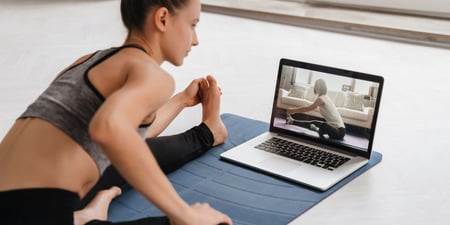
Introduction
Back pain is one of the most common ailments affecting millions of people worldwide. Whether it's a dull ache after a long day at work or sharp, debilitating pain, back discomfort can significantly impact your quality of life. Unfortunately, with the prevalence of back pain comes a multitude of myths and misconceptions that can often lead to ineffective or even harmful treatment methods.
In this article, we'll debunk some of the most common back pain myths and provide you with practical, evidence-based advice on how to overcome your pain and live a healthier, more active life.
Myth 1: “Rest Is the Best Medicine for Back Pain”
One of the most pervasive myths about back pain is that the best way to recover is by resting in bed. While it may seem logical to rest an injured area, especially if you're in pain, too much rest can actually do more harm than good.
The Truth: Prolonged bed rest can weaken the muscles that support your spine, leading to increased stiffness and pain. It can also delay recovery by causing your muscles and joints to become less flexible. Research has shown that staying active, within your pain tolerance, can actually help you recover faster. Gentle activities such as walking or swimming can keep your muscles engaged and prevent further deterioration.
The Solution: Instead of staying in bed, try to stay as active as possible. Engage in light activities that don’t aggravate your pain, such as walking or gentle stretching. If necessary, consult with a healthcare professional to develop a tailored exercise program that suits your condition.
Myth 2: “Back Pain Is a Natural Part of Aging”
It's easy to assume that back pain is just a part of getting older. After all, many older adults experience some form of back discomfort. However, this myth can lead to a passive acceptance of pain that could otherwise be managed or prevented.
The Truth: While aging does bring about changes in the spine, such as degenerative disc disease or arthritis, it doesn't mean you're destined to suffer from back pain. Many older adults remain pain-free by maintaining a healthy lifestyle, including regular exercise, proper posture, and a balanced diet.
The Solution: Focus on preventive care, regardless of your age. Regular physical activity, especially exercises that strengthen your core muscles, can support your spine and reduce the likelihood of back pain. Additionally, maintaining a healthy weight, eating a nutrient-rich diet, and practicing good posture can all contribute to a healthier back as you age.
Myth 3: “If You Have Back Pain, You Should Avoid Exercise”
Many people fear that exercising with back pain will make their condition worse. This belief can lead to a sedentary lifestyle, which may actually exacerbate the problem.
The Truth: Exercise is one of the most effective ways to manage and prevent back pain. Specific exercises can strengthen the muscles that support your spine, improve flexibility, and reduce the likelihood of future injuries. Avoiding exercise can lead to muscle weakness and stiffness, making back pain more likely to persist.
The Solution: Incorporate safe, low-impact exercises into your routine. Activities like yoga, swimming, and walking are excellent for maintaining flexibility and strength without putting too much strain on your back. Before starting any new exercise program, especially if you have existing back pain, it's a good idea to consult with a healthcare professional or a physical therapist.
Myth 4: “A Bulging Disc Always Means Surgery”
The idea of needing surgery for a bulging or herniated disc can be frightening. Many people believe that surgery is the only way to fix this problem, but this is often not the case.
The Truth: Most cases of bulging discs can be treated with non-surgical methods. Physical therapy, chiropractic care, and lifestyle modifications can often alleviate pain and help the disc heal over time. Surgery is usually considered a last resort, only necessary if conservative treatments fail or if there's significant nerve compression causing severe symptoms like loss of bowel or bladder control.
The Solution: If you’ve been diagnosed with a bulging disc, explore non-surgical treatment options first. Physical therapy can help strengthen the muscles around the spine, improve flexibility, and reduce pressure on the affected disc. In some cases, a combination of physical therapy, medication, and lifestyle changes can be enough to manage symptoms effectively.
Myth 5: “Back Pain Only Affects Older People”
Another common misconception is that back pain is only a problem for the elderly. While it’s true that age-related changes can contribute to back pain, people of all ages can experience it.
The Truth: Back pain can affect anyone, regardless of age. Poor posture, sedentary lifestyles, improper lifting techniques, and even stress can contribute to back pain in young adults, teenagers, and even children.
The Solution: Regardless of your age, it's important to maintain good posture, stay active, and use proper body mechanics when lifting heavy objects. For younger people, it's especially important to take breaks from prolonged sitting, such as during long hours at a desk or in front of a computer. Incorporating regular physical activity into your daily routine can help keep your spine healthy and reduce the risk of back pain.
Myth 6: “Pain Equals Damage”
It's natural to assume that the severity of pain is directly related to the extent of physical damage. However, this isn't always the case, especially when it comes to back pain.
The Truth: Back pain can often be more about muscle tension, inflammation, or stress rather than a serious injury. In some cases, the intensity of pain can be influenced by psychological factors such as stress, anxiety, or depression, which can amplify the sensation of pain.
The Solution: If you're experiencing back pain, it's important not to panic. Consult with a healthcare professional to assess the real cause of your pain. Treatments such as physical therapy, massage, and relaxation techniques can help reduce muscle tension and alleviate pain. Addressing any underlying stress or anxiety through mindfulness practices or counseling can also be beneficial.
Conclusion
Back pain is a complex issue, often surrounded by myths and misconceptions that can hinder effective treatment. By understanding the truth behind these common myths, you can take proactive steps to manage and overcome your pain.
Remember, staying active, maintaining a healthy lifestyle, and seeking professional guidance are key to keeping your back healthy and pain-free. If you're struggling with back pain, don't hesitate to consult with a healthcare professional to develop a treatment plan tailored to your specific needs.
References
1. Chou R, Qaseem A, Snow V, Casey D, Cross JT, Shekelle P, et al. Diagnosis and Treatment of Low Back Pain: A Joint Clinical Practice Guideline from the American College of Physicians and the American Pain Society. Annals of Internal Medicine; 2007.
2. Low Back Pain and Sciatica in Over 16s: Assessment and Management. National Institute for Health and Care Excellence (NICE); 2016.
3. Qaseem A, Wilt TJ, McLean RM, Forciea MA. Noninvasive treatments for acute, subacute, and chronic low back pain: a Clinical Practice guideline from the American College of Physicians. Annals of Internal Medicine; 2017.
Disclaimer: This Content has been developed from our generous global community and is intended for informational purposes only. This Content is not, nor is it intended to be, a substitute for professional medical advice, diagnosis, or treatment and should never be relied upon. Further, the personal views and experiences published are expressly those of the author, and do not represent the views or endorsement of SoulAdvisor through the act of publication on our site.





























































